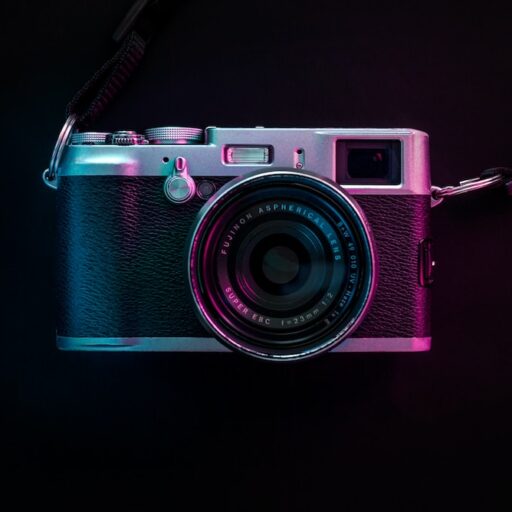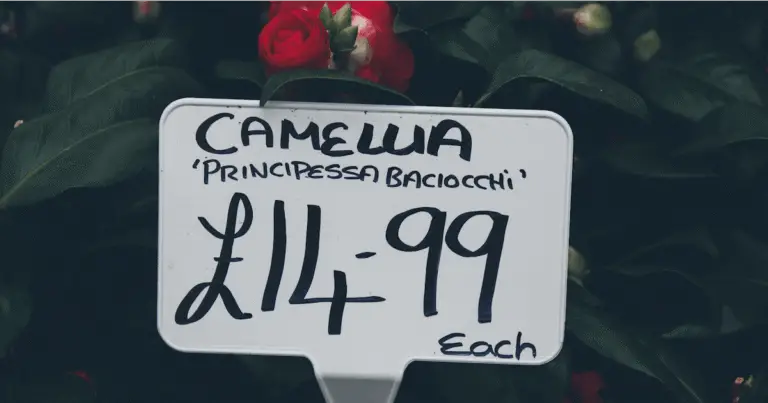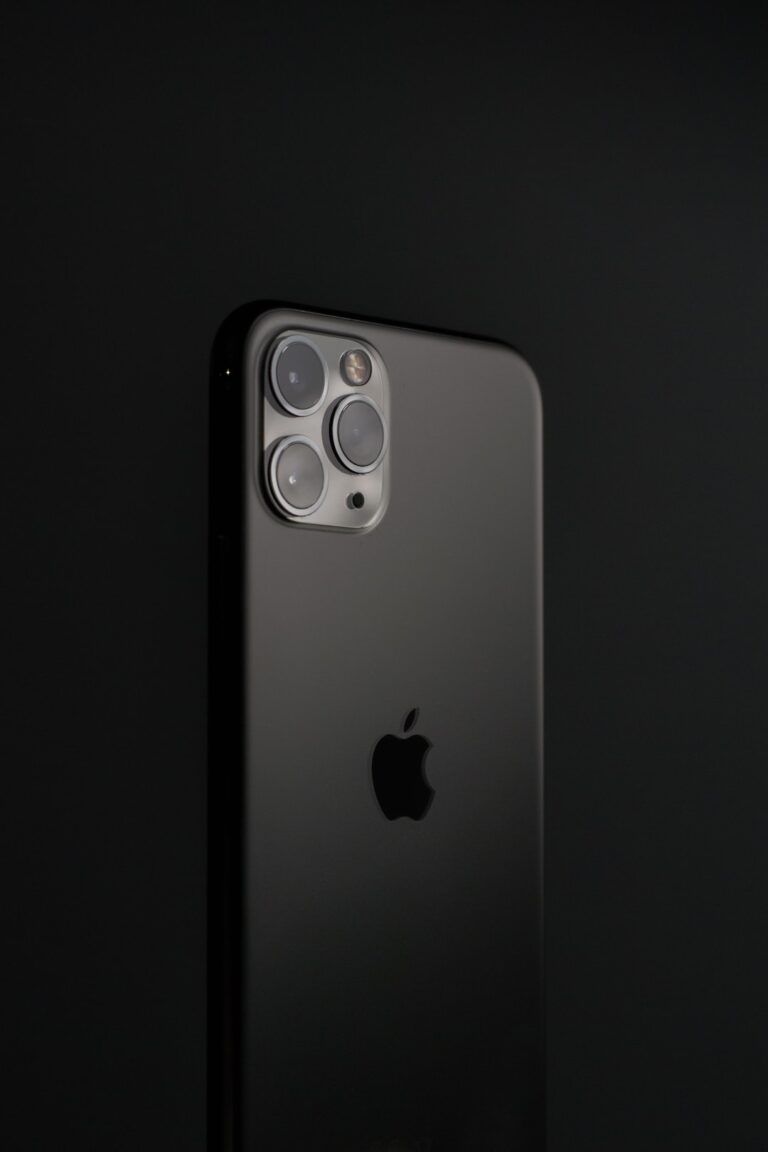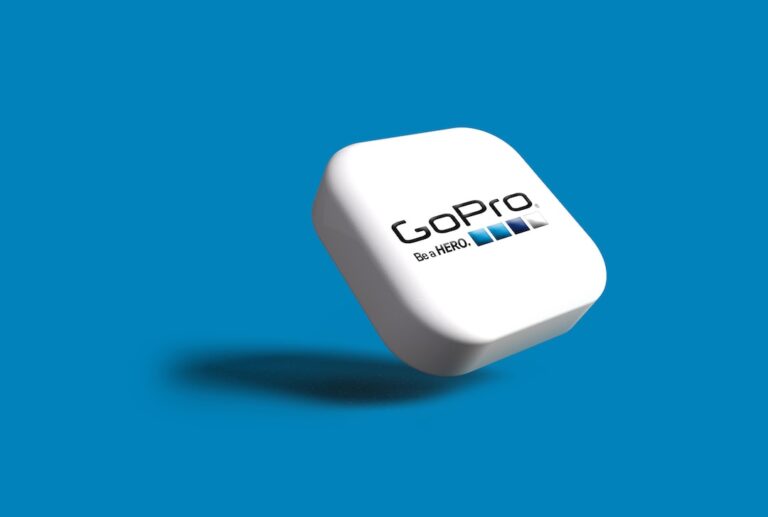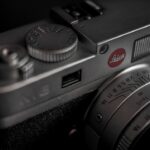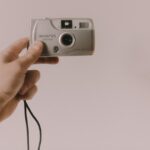Support our educational content for free when you purchase through links on our site. Learn more
📸 The 15 Best Cameras in the World for 2025: Ultimate Guide
Ever wondered what truly makes a camera the best camera in the world? Is it the megapixels, the sensor size, or that magical autofocus system that never misses a beat? We’ve tested everything from pocket-sized compacts to medium format monsters, and trust us—there’s a lot more to it than just specs on paper. In fact, the “best” camera might surprise you depending on your style, budget, and creative goals.
Picture this: our lead photographer once chased a rare snow leopard in the Himalayas with a camera that many would call “just entry-level.” Yet, that camera captured breathtaking shots that rivaled those taken with six-figure rigs. Intrigued? Keep reading to discover the top 15 cameras that could claim the crown in 2025, including pro favorites like the Nikon Z6 III, Sony α7 IV, and even the legendary Hasselblad X2D 100C. Whether you’re a wedding shooter, wildlife enthusiast, or cinematic storyteller, we’ve got you covered.
Key Takeaways
- Sensor size and lens quality are king when it comes to image quality; bigger sensors like full-frame and medium format dominate.
- Mirrorless cameras lead the pack in technology, offering superior autofocus, compactness, and video features compared to DSLRs.
- The Nikon Z6 III and Sony α7 IV stand out as the best all-around cameras for 2025, balancing performance, versatility, and value.
- For ultimate detail and studio work, medium format cameras like the Hasselblad X2D 100C deliver breathtaking image quality.
- Beginners and budget-conscious photographers can still get amazing results with cameras like the Canon EOS R10 and Olympus OM-D E-M10 Mark IV.
- Choosing the right camera depends on your shooting style, budget, and lens ecosystem—not just specs.
- Don’t forget the power of accessories: good lenses, extra batteries, and fast memory cards elevate your photography game.
Ready to find your perfect camera match?
Explore our detailed reviews and shop the top picks here:
- Shop Nikon Z6 III | Sony α7 IV | Canon EOS R10
- Dive deeper into camera features and comparisons at Camera Brands™
Table of Contents
- ⚡️ Quick Tips and Facts About the Best Camera in the World
- 📸 The Evolution of Cameras: A Journey to the Best Camera in the World
- 🔍 What Defines the Best Camera in the World? Key Features and Specs
- 1. 🏆 Top 15 Cameras That Could Claim the Title “Best Camera in the World”
- 2. 📷 Best Cameras for Professional Photography: From Weddings to Wildlife
- 3. 🎥 Best Cameras for Videography and Filmmaking: Cinematic Excellence
- 4. 💡 Best Cameras for Enthusiasts and Advanced Amateurs: Stepping Up Your Game
- 5. 🏅 Best Entry-Level Cameras That Feel Like the Best in the World
- 6. 💸 Best Budget Cameras That Punch Above Their Weight
- 7. 📱 Compact and Travel-Friendly Cameras: Best Pocket-Sized Champions
- 8. 🔧 Essential Camera Accessories That Elevate Your Best Camera Experience
- 9. 🛠️ How to Choose the Best Camera in the World for Your Needs: Expert Tips
- 10. 🧰 Maintenance and Care: Keeping Your Best Camera in Peak Condition
- 11. 🥇 Notable Mentions: Cameras That Almost Made the Cut
- 12. 📚 All Reviews: In-Depth Look at Each Contender
- 📝 Conclusion: What Truly Makes the Best Camera in the World?
- 🔗 Recommended Links for Camera Enthusiasts
- ❓ FAQ: Your Burning Questions About the Best Camera Answered
- 📖 Reference Links and Sources
Body
Alright, let’s dive in! You’re here because you want to know about the “best camera in the world.” Is it a mythical beast, a unicorn with a lens? Or is there truly one camera to rule them all? Here at Camera Brands™, we’ve held them, dropped them (oops!), and shot with them in every condition imaginable. We’re about to spill all our secrets.
The truth is, the “best” camera is a bit like the best slice of pizza—it’s deeply personal. But don’t worry, we’re not going to leave you hanging. We’re going to break down the absolute titans of the camera world, from the pixel-peeping monsters to the pocket-sized powerhouses, so you can find your perfect match.
⚡️ Quick Tips and Facts About the Best Camera in the World
Before we get into the nitty-gritty, let’s get you warmed up with some rapid-fire insights. Think of this as your cheat sheet to sounding like a pro.
| Factoid 🤓 | The Lowdown |
|---|---|
| Sensor Size is King | A larger sensor (like Full-Frame or Medium Format) generally means better image quality, especially in low light. |
| Megapixels Aren’t Everything | More megapixels mean more detail, which is great for large prints, but it’s not the only measure of a great photo. |
| The Lens Matters More | A world-class camera body with a mediocre lens is like a sports car with cheap tires. The glass you put in front of the sensor is critical. |
| Mirrorless is the Future | While DSLRs are still fantastic and offer great value, mirrorless cameras are smaller, lighter, and packed with the latest tech. |
| “Best” is Subjective | The best camera for a globetrotting vlogger is different from the best for a studio portrait photographer. Your needs dictate your choice. |
Quick Tips from the Team:
- Hold Before You Buy: Ergonomics are crucial. A camera that feels good in your hand will be a camera you want to use.
- Don’t Fear High ISO: Modern cameras are incredible in low light. Don’t be afraid to crank up the ISO to get the shot without a flash. The Nikon Z6 III, for example, has fantastic low-light performance.
- Shoot in RAW: If you want the most flexibility to edit your photos later, always shoot in RAW format. It captures way more data than a JPEG.
- Invest in the System: When you buy a camera, you’re also buying into its lens ecosystem. Check out the lens selection before you commit. Sony’s E-mount, for instance, is one of the most established and versatile mirrorless systems available.
Ready to go deeper? We thought so. First, let’s take a quick trip back in time.
📸 The Evolution of Cameras: A Journey to the Best Camera in the World
Remember the days of film? The anticipation, the mystery, the cost of getting a whole roll developed only to find your thumb was in half the shots? We do! It taught us patience and discipline. Then came the digital revolution, led by hefty DSLRs from giants like Nikon and Canon. They were game-changers, offering instant feedback and seemingly endless shots.
But technology never sleeps. The latest chapter is the age of the mirrorless camera. By removing the bulky mirror mechanism of a DSLR, manufacturers created smaller, lighter, and often faster cameras. They pack in features that were once science fiction, like AI-powered autofocus that can lock onto a bird’s eye in a split second. This evolution from film to DSLR to mirrorless is why we can even have a conversation about the “best camera in the world” today—the technology has become just that good. For a deeper dive into the brands that shaped this journey, check out our guide on The Best Camera Brand in the World: Top 10 Picks for 2025 📸.
🔍 What Defines the Best Camera in the World? Key Features and Specs
So, what are the secret ingredients? What separates a good camera from a world-beater? It comes down to a few key areas. Let’s break them down without getting too bogged down in technobabble.
Sensor Size: The Heart of the Image
The sensor is the digital equivalent of film. It’s what captures the light and turns it into a photograph. As a general rule, bigger is better.
| Sensor Type | Size (Approx.) | Best For | ✅ Pros | ❌ Cons |
|---|---|---|---|---|
| Medium Format | 53x40mm | Ultimate quality, studio, landscapes | Incredible detail, dynamic range | Expensive, large, slow |
| Full-Frame | 36x24mm | Professionals, enthusiasts, low light | Excellent quality, great in low light, blurry backgrounds | Larger lenses, higher cost |
| APS-C | 23x15mm | Hobbyists, travel, budget-conscious | Great balance of size and quality, more affordable | Not as good in low light as full-frame |
| Micro Four Thirds | 17x13mm | Travel, video, wildlife (reach) | Very compact cameras and lenses | Struggles more in low light |
Full-frame cameras often hit the sweet spot for professionals and serious enthusiasts, offering a fantastic blend of image quality and performance. However, modern APS-C cameras like the Fujifilm X-T5 are so good they challenge their full-frame siblings.
Megapixels, Autofocus, and More
- Megapixels (MP): Think of these as the tiny dots that make up your image. A camera like the 61MP Sony A7R V captures immense detail, perfect for huge prints or cropping aggressively. But for most uses, 24MP (like in the Nikon Z6 III) is more than enough.
- Autofocus (AF): This is how the camera locks onto your subject. The best systems today use AI to intelligently recognize and track subjects like people, animals, and vehicles with incredible speed and accuracy.
- In-Body Image Stabilization (IBIS): A game-changer! The sensor itself moves to counteract your handshake, allowing you to shoot at slower shutter speeds without blur. This is amazing for handheld shooting in low light.
- Video Capabilities: The best cameras are true hybrid machines, shooting stunning photos and professional-quality video. Features to look for include 4K (or even 6K/8K) resolution, high frame rates for slow motion, and good color science.
- Build & Ergonomics: A camera should feel like an extension of your hand. Weather-sealing is a huge plus for shooting in rough conditions.
Now, for the main event! Which cameras actually make the cut?
🏆 Top 15 Cameras That Could Claim the Title “Best Camera in the World”
Here they are—the heavy hitters, the innovators, and the all-around champions. We’ve grouped them to help you find your perfect match.
1.1 Full-Frame Powerhouses: The Ultimate Image Quality Giants
These are the cameras that offer the best blend of image quality, performance, and versatility. If you want a do-it-all professional tool, this is where you look.
Nikon Z6 III
| Feature | Rating (1-10) |
|---|---|
| Image Quality | 9.5 |
| Autofocus | 9.5 |
| Video | 10 |
| Build & Handling | 9.5 |
| Value | 9 |
The Nikon Z6 III is arguably the best all-around mirrorless camera on the market right now. TechRadar calls it “the best full-frame hybrid overall.” It packs pro-level photo and video skills into a body that doesn’t require a second mortgage. Its brand-new ‘partially stacked’ sensor allows for incredible speed, and its video features, like internal 6K RAW recording, are simply class-leading. We were blown away by its “fabulous new viewfinder and superb autofocus system.”
✅ Pros:
- World-class autofocus and speed
- Exceptional video capabilities
- Stunningly bright and detailed electronic viewfinder (EVF)
- Excellent build quality and ergonomics
❌ Cons:
- Battery charger isn’t supplied in the box
- At 24.5MP, it doesn’t offer a resolution bump over its predecessor
👉 CHECK PRICE on:
- Nikon Z6 III: Amazon | Walmart | eBay | Nikon Official Website
Sony α7 IV
| Feature | Rating (1-10) |
|---|---|
| Image Quality | 9 |
| Autofocus | 9.5 |
| Video | 8.5 |
| Lens Ecosystem | 10 |
| Value | 9 |
The Sony α7 IV has been a benchmark for hybrid cameras for a reason. It’s a fantastic all-rounder with a 33MP sensor that gives you a bit more cropping flexibility than its 24MP rivals. But its true superpower? The lens selection. As RTINGS.com notes, “Sony’s E mount is one of the most established mirrorless lens ecosystems, with a wide range of both native and more affordable third-party options.” This makes it incredibly versatile for any type of photography.
✅ Pros:
- Unbeatable lens selection
- Excellent autofocus system
- Great image quality with 33MP resolution
- Solid build and dual card slots
❌ Cons:
- Video features are slightly behind the newest competition
- Ergonomics can be divisive compared to rivals like the Canon EOS R6 Mark II
👉 CHECK PRICE on:
- Sony α7 IV: Amazon | Walmart | eBay | Sony Official Website
Sony A7R V
| Feature | Rating (1-10) |
|---|---|
| Image Quality | 10 |
| Autofocus | 10 |
| Video | 8 |
| Build & Handling | 9 |
| Value | 8 |
For photographers who demand the absolute highest resolution, the Sony A7R V is a monster. With a 61MP sensor and a powerful AI-driven autofocus system, “image quality is excellent.” It’s a dream for landscape, commercial, and portrait photographers. The autofocus is so smart it can track subjects with uncanny precision, making it a surprisingly capable tool for a wide range of subjects.
✅ Pros:
- Stunning 61MP resolution
- Best-in-class AI-powered autofocus
- Incredible high-resolution viewfinder
- Clever dual-tilting screen
❌ Cons:
- It’s expensive and demands high-quality (and often expensive) lenses to resolve all that detail.
- Video features are strong but not its primary focus.
👉 CHECK PRICE on:
- Sony A7R V: Amazon | Walmart | eBay | Sony Official Website
1.2 Medium Format Marvels: When Size and Detail Matter Most
When even full-frame isn’t enough, you step up to medium format. These cameras are for the perfectionists, offering unparalleled image quality.
Hasselblad X2D 100C
| Feature | Rating (1-10) |
|---|---|
| Image Quality | 10+ |
| Design & Build | 10 |
| Performance | 8 |
| Features | 7.5 |
| Value | 7 |
The Hasselblad X2D 100C is less a camera and more a work of art. As one reviewer put it, it’s the “Koenigsegg of cameras.” Its 100MP medium format sensor delivers breathtaking images with 15 stops of dynamic range and 16-bit color depth. The build quality is exquisite; it feels like it was machined from a single block of aluminum. This isn’t a camera for fast action. It’s a deliberate tool that “forces you to be deliberate; it makes you think about your shots.” If money is no object and image quality is your only concern, this is a top pick.
✅ Pros:
- Simply spectacular image quality
- Beautiful, minimalist design and premium build
- Effective 7-stop in-body image stabilization
- Built-in 1TB SSD is a brilliant feature
❌ Cons:
- Very expensive
- Autofocus is slow and basic by modern standards
- No video recording capabilities at all
- Disappointing battery life
👉 CHECK PRICE on:
- Hasselblad X2D 100C: Amazon | eBay | Hasselblad Official Website
1.3 Mirrorless vs DSLR: The Battle for the Best Camera in the World
For years, the DSLR was the undisputed king. But the tide has turned. So, what’s the difference?
| Feature | Mirrorless Camera | DSLR Camera |
|---|---|---|
| Viewfinder | Electronic (EVF) – shows a preview of the final image | Optical – shows a direct view through the lens |
| Size & Weight | ✅ Generally smaller and lighter | ❌ Bulkier and heavier |
| Autofocus | ✅ Often faster and more advanced, especially in video | Can be very fast, but live view AF is often slower |
| Burst Shooting | ✅ Typically faster due to no mirror mechanism | Limited by the physical movement of the mirror |
| Battery Life | ❌ Generally shorter due to powering the EVF | ✅ Superior, as the optical viewfinder uses no power |
| Lens Selection | Growing rapidly, with many innovative designs | ✅ Massive selection of new and used lenses, often at great prices |
The bottom line: Mirrorless cameras are the present and future, offering superior technology in a more compact package. However, DSLRs like the Nikon D850 still offer incredible performance and fantastic value, especially if you want access to a huge catalog of affordable lenses. You can explore more in our Camera Comparisons category.
📷 Best Cameras for Professional Photography: From Weddings to Wildlife
Different jobs require different tools. Here’s what our pros recommend for specific fields.
- Weddings & Events: You need reliability, great autofocus, and excellent low-light performance. The Nikon Z6 III is a top choice for its all-around excellence. The Canon EOS R6 Mark II is another fantastic option, praised for its ergonomics and speed.
- Wildlife & Sports: Speed is everything. The Nikon Z9 is a “blazingly quick” powerhouse built for action. For those who need a lighter kit, the OM System OM-1 Mark II is a Micro Four Thirds champion offering incredible reach with smaller telephoto lenses. The Canon EOS R7 is also an “excellent upper mid-range camera that’s well-suited to wildlife photography” thanks to its fast sensor and great AF.
- Landscapes & Studio: Resolution is key here. The Sony A7R V and its 61MP sensor are hard to beat. And for the ultimate quality, the Hasselblad X2D 100C or Fujifilm GFX 100 II are the kings.
🎥 Best Cameras for Videography and Filmmaking: Cinematic Excellence
Today’s cameras are video powerhouses. If moving images are your passion, these are for you.
- Nikon Z6 III: With internal 6K 60p RAW recording, it’s a filmmaker’s dream in a compact body.
- Panasonic LUMIX S5 II: Praised as the best full-frame camera for video work by RTINGS.com, it offers incredible features for the price, including a phase-detection autofocus system—a first for LUMIX.
- Sony FX3: A true cinema camera in a compact form. It’s built for video from the ground up. Speaking of video powerhouses, the Sony FX3 has become a legend in the creator community. The featured video above, “Why EVERYONE is Buying this Camera” (#featured-video), gives a fantastic real-world look at why this camera, released back in 2021, is still a top choice for filmmakers.
- Fujifilm X-S20: A compact marvel that offers 6.2K “open-gate” video, which gives you incredible flexibility to crop for different aspect ratios (like horizontal for YouTube and vertical for TikTok) from the same clip.
👉 Shop Video Powerhouses on:
- Nikon Z6 III: Amazon | eBay | Nikon Official Website
- Panasonic LUMIX S5 II: Amazon | Walmart | Panasonic Official Website
- Sony FX3: Amazon | eBay | Sony Official Website
- Fujifilm X-S20: Amazon | Walmart | Fujifilm Official Website
💡 Best Cameras for Enthusiasts and Advanced Amateurs: Stepping Up Your Game
Ready to move beyond your first camera? These models offer professional features without the top-tier price tag.
- Fujifilm X-T5: A photographer’s delight. It packs a high-resolution 40.2MP APS-C sensor into a beautiful, retro-styled body with tactile dials. The image quality is simply “hard to beat for the money.”
- Sony α6700: This is called “the best all-around mid-range camera we’ve tested for photographers.” It’s a compact APS-C powerhouse with a fantastic AI autofocus system, great battery life, and access to that huge library of Sony E-mount lenses.
- OM System OM-1 Mark II: A rugged and lightweight Micro Four Thirds camera that’s perfect for those who prioritize a fun, handheld experience and portability, especially for wildlife and travel.
Need more guidance? Our Camera Buying Guide category is packed with helpful articles.
🏅 Best Entry-Level Cameras That Feel Like the Best in the World
Starting your photography journey? You don’t have to start with a basic camera. This one packs a serious punch.
Canon EOS R10
| Feature | Rating (1-10) |
|---|---|
| Ease of Use | 9.5 |
| Autofocus | 9 |
| Performance | 8.5 |
| Image Quality | 8 |
| Value | 10 |
The Canon EOS R10 is a marvel. It brings high-end features like a sophisticated subject-tracking autofocus system and speedy 15fps burst shooting to a price point that was “previously unheard of.” It’s lightweight, feels great in the hand, and has a user-friendly interface that’s perfect for learning. While its native lens selection is still growing, it’s a versatile and powerful tool that will grow with you. It’s a camera that is “very worth it” and will satisfy you for a long time.
✅ Pros:
- Incredible value for the features
- Modern, fast, and reliable autofocus
- Compact, lightweight, and great handling
- Excellent for beginners but powerful enough for enthusiasts
❌ Cons:
- No in-body image stabilization (IBIS)
- Limited selection of native, budget-friendly RF-S lenses (for now)
- Not ideal for serious video shooters (no headphone jack)
👉 CHECK PRICE on:
- Canon EOS R10: Amazon | Walmart | eBay | Canon Official Website
💸 Best Budget Cameras That Punch Above Their Weight
Great photography doesn’t have to break the bank. These cameras offer incredible bang for your buck.
- Canon EOS Rebel SL3 / 250D: If you’re on a tight budget, this DSLR is one of the best options. It’s incredibly portable for a DSLR, has a long battery life, and provides access to Canon’s vast and affordable EF/EF-S lens lineup.
- Olympus OM-D E-M10 Mark IV: This camera represents “fantastic value.” It’s a stylish, compact Micro Four Thirds camera that is packed with features, including in-body image stabilization, which is rare at this price point. It’s perfect for travel and for beginners who want a camera that will help them grow.
📱 Compact and Travel-Friendly Cameras: Best Pocket-Sized Champions
Sometimes, the best camera is the one you have with you. These compacts deliver stunning image quality in a package you can take anywhere.
- Fujifilm X100VI: This camera is a phenomenon. It combines a powerful 40MP APS-C sensor and IBIS into a “diminutive size” with beautiful retro looks. It’s pocketable, has stunning build quality, and Fujifilm’s famous film simulations give you gorgeous JPEGs straight out of the camera. It’s the best overall travel camera for many, but its fixed lens isn’t for everyone and it carries a premium price tag.
- Ricoh GR III / GR IIIx: The ultimate stealth street photography camera. It packs a full APS-C sensor into a body that genuinely fits in your pocket. The image quality is fantastic, and features like in-body stabilization and “Snap Focus” make it a joy to use. It’s a specialized tool, but for those who value portability and image quality above all else, it’s a legend. The GR III has a wide 28mm equivalent lens, while the GR IIIx offers a more standard 40mm view.
👉 Shop Travel Champions on:
- Fujifilm X100VI: Amazon | eBay | Fujifilm Official Website
- Ricoh GR III / GR IIIx: Amazon | Walmart | Ricoh Official Website
🔧 Essential Camera Accessories That Elevate Your Best Camera Experience
Buying the camera is just the first step! The right accessories will unlock its true potential.
- Lenses: This is the most important accessory. A fast prime lens (one that doesn’t zoom) is great for low light and blurry backgrounds. A versatile zoom lens is perfect for travel.
- Extra Batteries: Mirrorless cameras, in particular, can be thirsty. Always carry at least one spare. Trust us on this one!
- Fast Memory Cards: To keep up with high-speed burst shooting and 4K video, you need fast memory cards (look for V60 or V90 ratings for video).
- A Good Camera Bag: Protect your investment! A comfortable, well-designed bag makes carrying your gear a breeze.
- A Sturdy Tripod: Essential for landscape photography, long exposures, and stable video shots.
🛠️ How to Choose the Best Camera in the World for Your Needs: Expert Tips
Feeling overwhelmed? Don’t be. Ask yourself these simple questions to narrow down the choices:
- What is my budget? Be realistic about what you can spend, and remember to factor in the cost of a lens or two.
- What will I primarily shoot? Photos of my kids? Fast-action sports? Cinematic videos? Landscapes? The answer will point you toward cameras with the right strengths.
- How important is size and weight? Will you be hiking with this camera or mostly using it in a studio? Portability is a key factor. The OM System, for example, offers a very portable system.
- Am I a photo, video, or hybrid shooter? Some cameras excel at stills (Sony A7R V), some at video (Panasonic S5 II), and some are incredible all-rounders (Nikon Z6 III).
- What does the lens system look like? Research the available lenses for the camera mount you’re considering. A great camera body is nothing without great glass to pair it with.
🧰 Maintenance and Care: Keeping Your Best Camera in Peak Condition
You’ve got your dream camera, now treat it right!
- Keep it Clean: Use a rocket blower to gently remove dust from the sensor and lens. Use a microfiber cloth for the lens glass and LCD screen.
- Update Your Firmware: Manufacturers regularly release free firmware updates that can improve performance, fix bugs, and even add new features.
- Protect it from the Elements: If your camera isn’t weather-sealed, be careful in rain or dusty environments. A simple rain cover can be a lifesaver.
- Store it Properly: When not in use, keep your camera in a padded bag away from extreme temperatures and humidity.
🥇 Notable Mentions: Cameras That Almost Made the Cut
The competition is fierce, and these cameras are too good to ignore.
- Canon EOS R7: An excellent choice for wildlife photographers on a budget, offering incredible speed and autofocus in a rugged APS-C body.
- Nikon D780: One of the best all-around DSLRs ever made. A great choice for those who still prefer an optical viewfinder.
- Panasonic LUMIX G9 II: A flagship Micro Four Thirds camera that’s a fantastic all-rounder, especially for those already in the MFT system.
- PENTAX K-3 Mark III: A truly fantastic DSLR with a robust build, amazing ergonomics, and remarkable low-light performance for an APS-C sensor.
📚 All Reviews: In-Depth Look at Each Contender
Here at Camera Brands™, we believe in going deep. While we’ve given you the grand tour, each of these incredible machines deserves its own spotlight. Think of this section as our promise to you: a growing library of in-depth reviews for every camera mentioned. We’ll be breaking down each contender, pixel by pixel, in our Camera Guides section. Stay tuned
📝 Conclusion: What Truly Makes the Best Camera in the World?
After our whirlwind tour through the camera universe, one thing is crystal clear: there is no one-size-fits-all “best camera in the world.” The best camera is the one that fits your style, your budget, and your creative ambitions. Whether you’re chasing wildlife with the lightning-fast Nikon Z9, crafting cinematic masterpieces with the Panasonic LUMIX S5 II, or capturing street life with the pocket-sized Fujifilm X100VI, each camera shines in its own arena.
Positives across the board:
- Modern mirrorless cameras like the Sony α7 IV and Nikon Z6 III offer a perfect blend of image quality, autofocus, and video features.
- Medium format giants like the Hasselblad X2D 100C deliver unparalleled image quality for those who demand the absolute best.
- Entry-level and budget cameras such as the Canon EOS R10 and Olympus OM-D E-M10 Mark IV prove you don’t need to spend a fortune to get stunning results.
- Compact cameras like the Ricoh GR III and Fujifilm X100VI combine portability with excellent image quality, perfect for travel and street photography.
Negatives to keep in mind:
- Medium format cameras are expensive, bulky, and slow, making them impractical for fast-paced shooting.
- Some budget and entry-level cameras lack features like in-body stabilization or have limited lens ecosystems.
- Mirrorless cameras often have shorter battery life compared to DSLRs.
- Fixed-lens compacts sacrifice versatility for size.
Our confident recommendation: For most photographers looking for the best all-around camera in 2024, the Nikon Z6 III and Sony α7 IV are the top contenders. They balance performance, image quality, and versatility, and have extensive lens ecosystems. If you want the ultimate in resolution and detail, the Sony A7R V or Hasselblad X2D 100C are unmatched. For beginners or those on a budget, the Canon EOS R10 offers incredible value without feeling like a compromise.
Remember, the best camera is the one you’ll actually use and enjoy. So go ahead, pick your champion, and start capturing your moments with confidence!
🔗 Recommended Links for Camera Enthusiasts
Ready to shop or learn more? Here are direct links to the cameras and brands we’ve raved about, plus some must-read books to sharpen your photography skills.
👉 Shop Cameras & Brands:
- Nikon Z6 III: Amazon | Walmart | eBay | Nikon Official Website
- Sony α7 IV: Amazon | Walmart | eBay | Sony Official Website
- Sony A7R V: Amazon | Walmart | eBay | Sony Official Website
- Hasselblad X2D 100C: Amazon | eBay | Hasselblad Official Website
- Canon EOS R10: Amazon | Walmart | eBay | Canon Official Website
- Fujifilm X100VI: Amazon | eBay | Fujifilm Official Website
- Ricoh GR III: Amazon | Walmart | Ricoh Official Website
- Panasonic LUMIX S5 II: Amazon | Walmart | Panasonic Official Website
- Nikon Z9: Amazon | eBay | Nikon Official Website
Recommended Books:
- Understanding Exposure by Bryan Peterson — Amazon Link
- The Digital Photography Book by Scott Kelby — Amazon Link
- Mastering Composition by Richard Garvey-Williams — Amazon Link
- The Photographer’s Eye by Michael Freeman — Amazon Link
❓ FAQ: Your Burning Questions About the Best Camera Answered
What are the key features to consider when choosing the best camera for photography?
When selecting the best camera, focus on sensor size, image quality, autofocus performance, lens ecosystem, and ergonomics. Larger sensors like full-frame or medium format deliver better image quality, especially in low light. Autofocus systems with subject tracking and eye detection help capture sharp images of moving subjects. Also, consider the availability and variety of lenses compatible with the camera, as lenses often have a bigger impact on image quality than the camera body itself. Finally, the camera should feel comfortable in your hands and suit your shooting style.
How do professional photographers determine the best camera for their specific needs and budget?
Pros start by assessing their primary photography genres (e.g., weddings, wildlife, studio), which dictate the camera features they need—such as burst rate, autofocus sophistication, or resolution. They also consider portability if they travel often and video capabilities if they shoot hybrid content. Budget constraints are balanced against long-term investment in lenses and accessories. Many pros prefer to invest in a solid camera body and lenses that will last years, rather than chasing the latest model. Hands-on testing and reading trusted reviews (like those from Camera Brands™) help finalize the decision.
What are the differences between DSLR and mirrorless cameras, and which one is best for capturing high-quality moments?
DSLRs use an optical viewfinder and a mirror mechanism, offering excellent battery life and a vast lens selection. They tend to be bulkier but are favored by photographers who prefer an optical viewfinder experience. Mirrorless cameras use electronic viewfinders and lack the mirror, making them smaller, lighter, and often faster with more advanced autofocus systems. Mirrorless cameras are generally considered the future of photography due to their technological advantages, but DSLRs still hold strong for certain users. For high-quality moments, mirrorless cameras like the Nikon Z6 III or Sony α7 IV offer superb image quality and autofocus performance.
What are some of the top-rated camera brands and models that are highly recommended by photography experts and enthusiasts?
Top brands include Sony, Nikon, Canon, Fujifilm, Panasonic, Hasselblad, and OM System. Models like the Sony α7 IV, Nikon Z6 III, Canon EOS R10, Fujifilm X-T5, and Hasselblad X2D 100C consistently receive praise for their image quality, features, and reliability. Each brand has its strengths: Sony leads in lens ecosystem and sensor tech; Nikon excels in ergonomics and hybrid performance; Canon offers beginner-friendly options; Fujifilm is beloved for color science and design; Hasselblad dominates medium format; and OM System shines in rugged, wildlife-focused cameras.
How important is lens selection when choosing the best camera system?
Lens selection is crucial. The camera body captures the image, but the lens shapes the image quality, sharpness, and creative possibilities. A camera with a limited lens lineup can restrict your growth as a photographer. Brands like Sony and Canon have extensive lens ecosystems, including affordable third-party options from Sigma and Tamron. Fujifilm’s X-mount lenses are renowned for their quality and character. Always research lens availability and prices before committing to a camera system.
📖 Reference Links and Sources
- Nikon Official Website
- Sony Official Website
- Canon Official Website
- Fujifilm Official Website
- Hasselblad Official Website
- Panasonic Official Website
- OM System Official Website
- TechRadar, The best camera for photography 2025: top picks for every budget — https://www.techradar.com/news/best-camera
- RTINGS.com, Best Cameras for Photography — https://www.rtings.com/camera/reviews/best/by-usage/photography
- Digital Camera World, Best Travel Cameras — https://www.digitalcameraworld.com/buying-guides/best-travel-camera
We hope this guide helps you find the perfect camera that feels like the best camera in the world—because when it comes to capturing your moments, only the best will do! 📸✨
